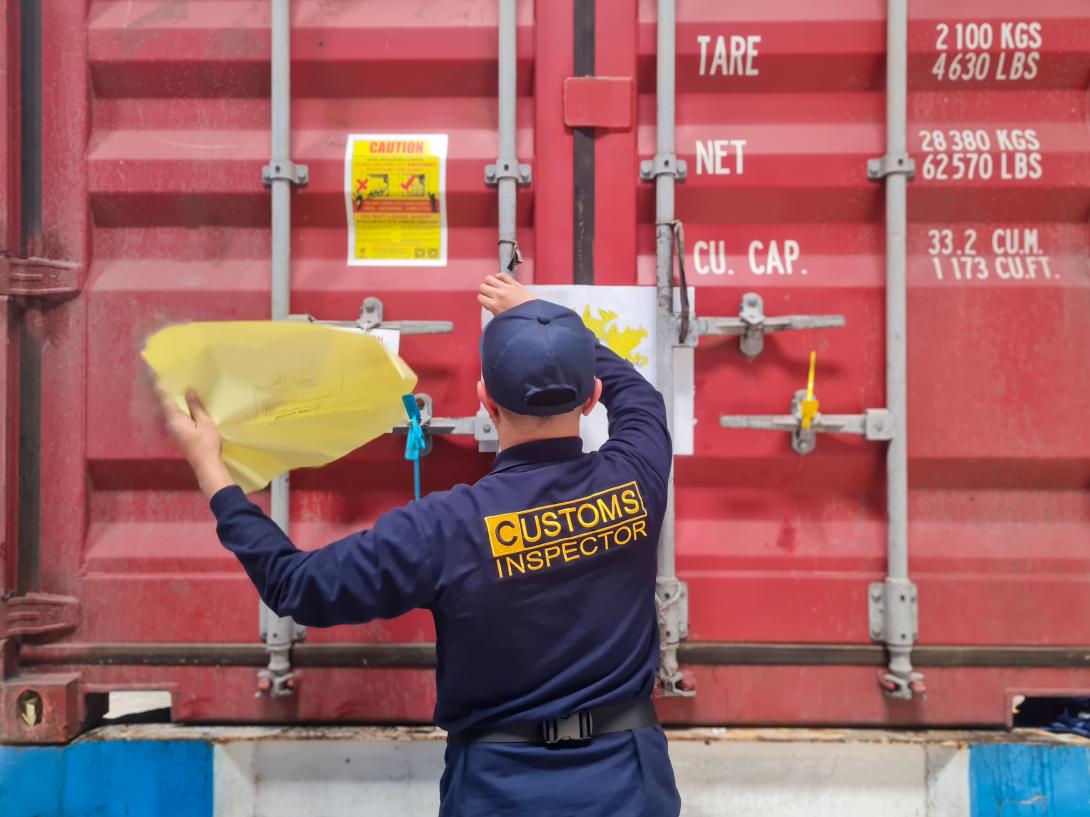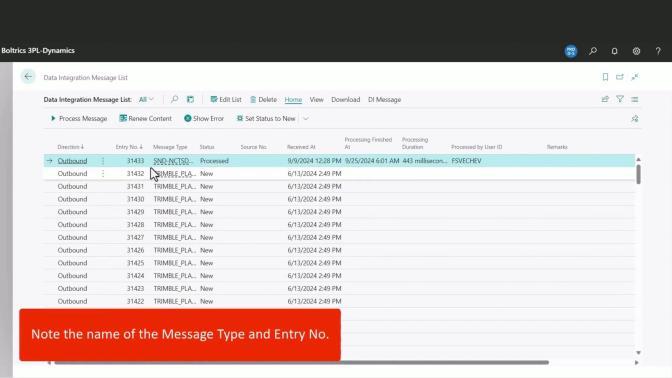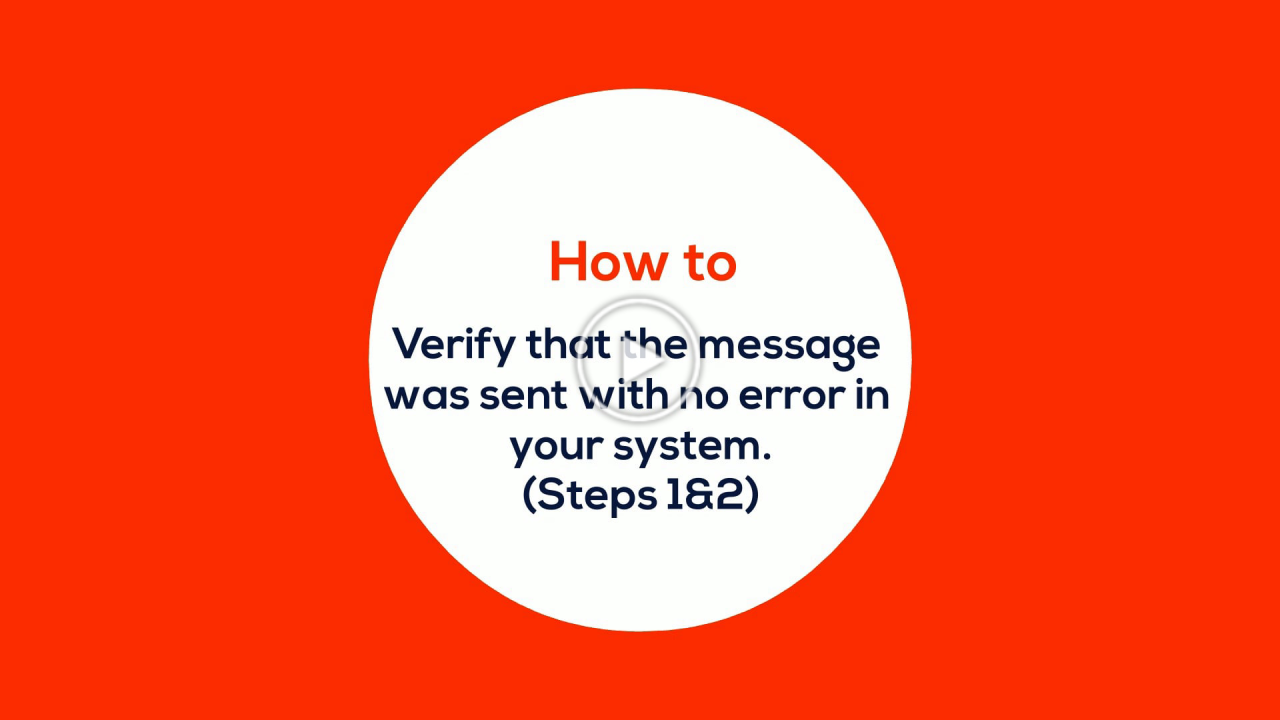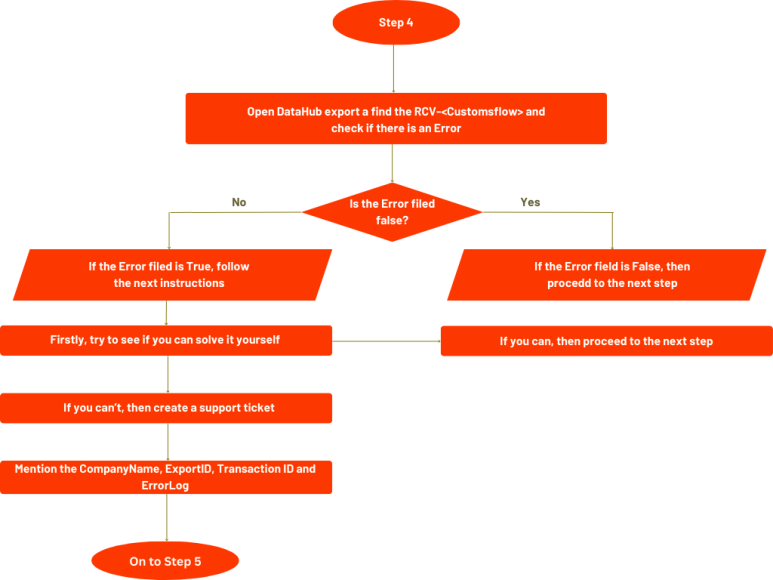Hoe sneller en beter omgaan met douane integratie berichten
In de douane-wereld valt of staat uw aangifteproces met de keuze voor de juiste software. En als u de keuze heeft gemaakt, is het belangrijk dat de software kunt vertrouwen – nu en in de toekomst. Een stabiele oplossing voor de communicatie met de douane is niet alleen prettig om te hebben, maar een absolute must. Goede communicatie vereist een sterk en toekomstbestendig platform: DataHub.

Douaneberichten via DataHub
Bij de supportafdeling krijgen we vaak de vraag:
Waar blijft de reactie op mijn aangifte?
Deze reactie kan om verschillende redenen ontbreken, zoals:
Doe een eerste analyse

Om u zo spoedig mogelijk antwoord te geven verwachten we dat u zelf een eerste analyse heeft uitgevoerd.
Als blijkt dat het probleem bij ons ligt, kunt u een supportticket aanmaken met alle benodigde informatie.
Stap 1-2: Hoe voer ik een eerste analyse uit?
Stap 1: Controleer of het bericht zonder fouten is verstuurd. Ga hiervoor naar de Data Integration Message List en controleer of de status van uw document op ‘Verwerkt’ staat. Als dit het geval is, kunt u doorgaan naar de volgende stap.
Stap 2: Open het betreffende berichttype. Noteer hier het exportID (deze waarde staat ingevuld in het veld ‘Transportlocatie’). Met dit exportID kunt u vervolgens in Datahub Exports meer informatie vinden door hierop te filteren.
Bekijk onderstaande video voor een gedetailleerde uitleg.

Stap 3: Ik heb geen DataHub-transactie van de douane ontvangen. Wat nu?
In de derde stap controleert u of er problemen zijn bij de douane. Vraag de douane of zij het bericht hebben ontvangen.
Controleer ook of zij een reactie hebben teruggestuurd. Als de douane aangeeft dat ze het antwoordbericht hebben verzonden en er geen problemen aan hun kant zijn, is het tijd om een supportticket aan te maken.
Vermeld hierin alle informatie uit de video hierboven (de gegevens van stap 1 en 2), en sluit af met het berichttype dat de douane als reactie heeft gestuurd, inclusief de tijd en datum van verzenden.
Stap 4: Controleer het inkomende bericht in uw systeem (DataHub export)
De vierde stap is om DataHub Export te openen, de RCV-<Douanestroom> te vinden en te controleren of er een fout is opgetreden (zie stap 2). Als het veld ‘Fout’ op ‘Nee’ staat, kunt u direct doorgaan naar de volgende stap. Zo niet, dan is het tijd om een supportticket aan te maken.
Bekijk het stroomschema hieronder voor een stapsgewijze handleiding.

Stap 5: Controleer het Data Integratiebericht
In de laatste stap opent u het Data Integratiebericht waarop u de berichten verwacht, en zoek de betreffende transactie. De status van dit bericht bepaalt de volgende stap.
Bekijk het stroomschema hieronder voor een stapsgewijze handleiding.

Douane: klanten bedienen met grenzeloos gemak
Bij grensoverschrijdend transport wilt u uw klanten volledig ontzorgen. Daarom is het essentieel dat alle vereiste documenten correct en volledig zijn. U beschikt over de nodige expertise, en met de douanesoftware van ELEVATE heeft u ook de juiste tools om aan diverse formaliteiten te voldoen. Of het nu gaat om douaneprocessen binnen of buiten Europa, alles wordt beheerd in één applicatie. Altijd volgens de meest recente regelgeving en steeds up-to-date.
Lees meer over onze douane software